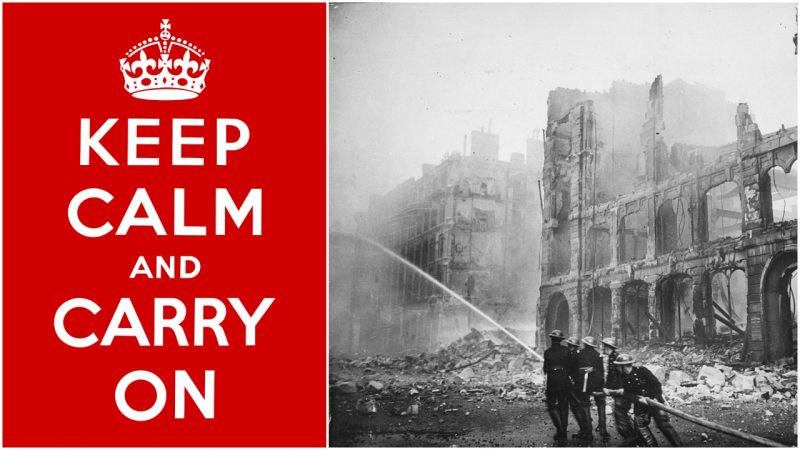Stuart Manley and his wife, Mary, run a second-hand bookshop called Barter Books in Alnwick, Northumberland. In 2000, they bought a box of old books at an auction. When Stuart got them back to the shop, he discovered a poster at the bottom of the box.
It was almost entirely red, with only a white crown and a bold white typeface which read: KEEP CALM AND CARRY ON. Neither Stuart nor Mary knew anything about the history of the poster, but they liked it so much that they had it framed and displayed in their bookshop.
So many visitors to the shop asked whether they could buy the poster that the Manleys had copies made in 2001 and started to sell them. These were reasonably popular until the financial crisis of 2008 hit the UK when interest in it exploded.
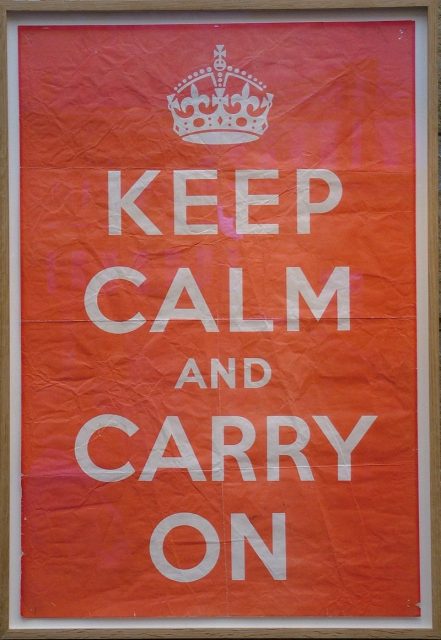
Suddenly, this old poster seemed entirely apposite. It became one of the most commonly seen, copied, and parodied images, appearing on everything from mugs to shopping bags.
At this point, people became interested in the history of this poster, which proved to be not only fascinating but also a direct link to another period of crisis in Britain’s history.
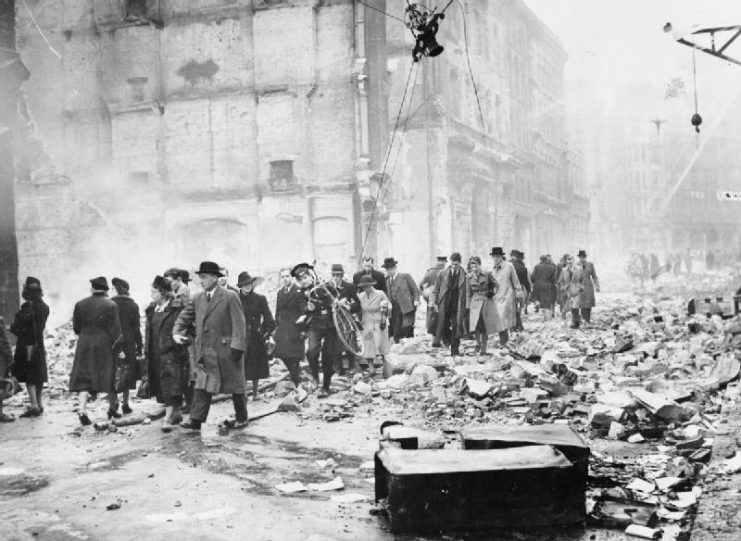
On September 3rd, 1939, Britain declared war on Nazi Germany. No-one was quite certain what this war would be like, but there were many dire predictions of mass air attacks on civilian areas, perhaps involving the use of poison gas.
Many people in government were concerned about the effects that such attacks might have on the morale of the civilian population. As a result, the day after war was declared, a new British ministry was officially announced: the Ministry of Information.
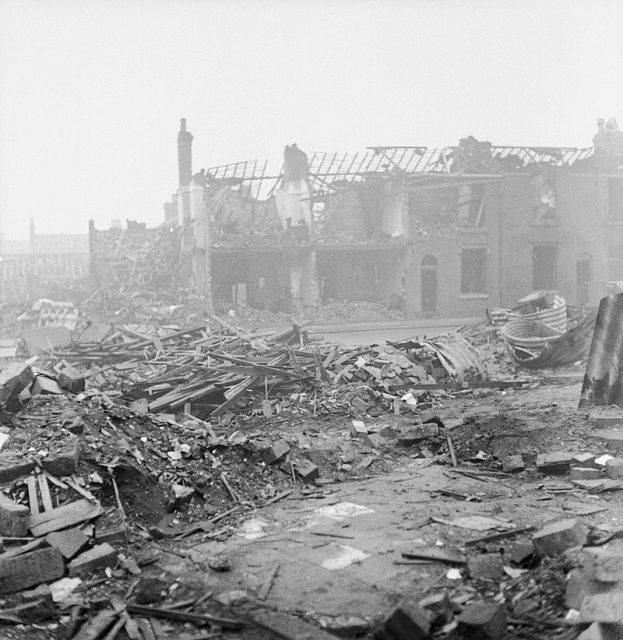
The Ministry’s task was “to promote the national case to the public at home and abroad in time of war” through the design and dissemination of “National Propaganda.”
As the war progressed, the Ministry would become involved in many propaganda activities including funding films intended to bolster morale and further the war effort. But at the beginning of the war, they focussed on the production of a series of posters.

Some were informational, emphasizing the need to maintain security. A number of them used humor in the form of cartoons produced by well-known artists.
However, in September 1939, three posters were produced which were intended to reassure the British public in the event of large-scale German air attacks.

These followed a common design featuring a specially designed, hand-lettered bold typeface with white text set on a dramatic red background. The only image on these posters was to be a stylised royal crown in white.
The first two posters were widely distributed throughout the remainder of 1939 and into 1940, during the German invasion of France and the Battle of Britain. The first featured text which read: “YOUR COURAGE, YOUR CHEERFULNESS, YOUR RESOLUTION WILL BRING US VICTORY.”
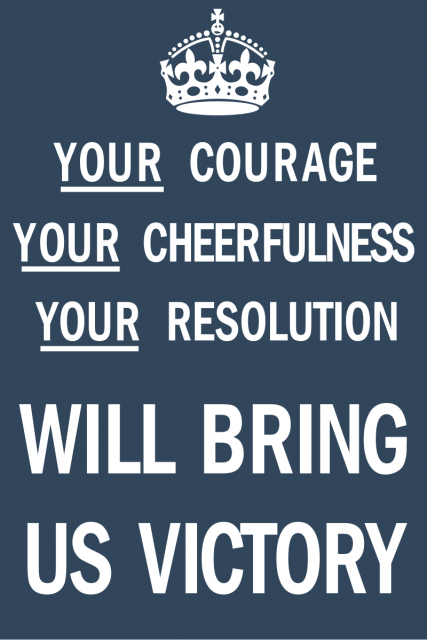
The second read: “FREEDOM IS IN PERIL. DEFEND IT WITH ALL YOUR MIGHT.”
No-one is now certain who devised the text for these posters during the summer of 1939, but millions of copies were produced. They weren’t universally appreciated in Britain. For example, it was pointed out by many people that “YOUR COURAGE…” might have been much more effective as “OUR COURAGE…”
Many people were also apparently puzzled by the word “resolution“ which they associated only with New Year.
The third poster read: “KEEP CALM AND CARRY ON.” However, although over two million examples of it were printed, these weren’t distributed at all.

Instead, it was decided that this poster was to be held in reserve, for use only if German bombing led to large-scale civil unrest or, in the worst case, if a German invasion of England took place.
In the event, the civilian reaction to German bombing did not lead to the breakdown of society (as some people had prophesized) and the German invasion did not take place. The third poster was never issued, and most copies were pulped in 1940 when Britain faced a severe shortage of paper. Only a few examples survived.

It seems likely that no-one would have been aware this poster today if it not for the fact that, somehow, one copy found its way into a dusty box of old books in Northumberland in 2000 at a time when Britain was once again about to enter a period of austerity.
The reasons for the popularity of this rediscovered poster aren’t hard to understand. Quite apart from its obvious nostalgic value, this reaction to adversity is so quintessentially British that it struck a chord during the difficult early years of the 2000s.
Although the poster originally comes from a time when Britain was in great peril, there is no attempt at Nationalism here and no appeal to a false and manifestly unreal triumphalism. Instead, the remedy to potential catastrophe is the wonderfully understated “Keep Calm.”
What could be more British?
